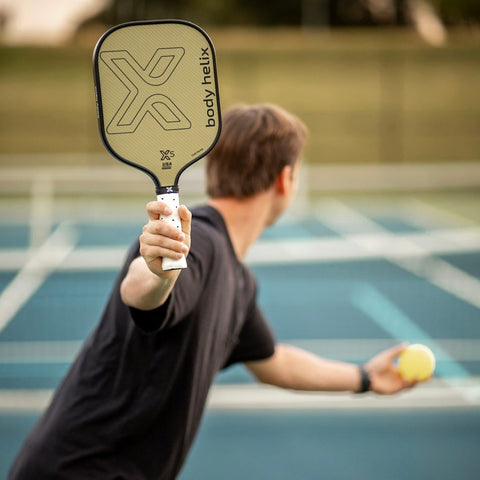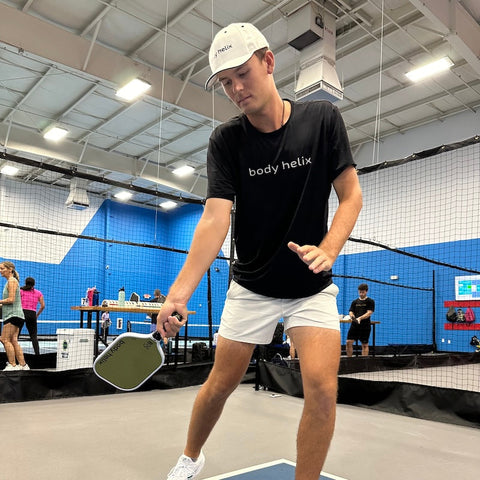Introduction
In the dynamic world of pickleball strategy, stacking stands out as a sophisticated tactic that can tip the scales in your favor. Whether you're a seasoned player looking to fine-tune your gameplay or a newcomer eager to expand your strategic repertoire, understanding the ins and outs of stacking is essential. In this comprehensive guide, we'll unravel the mysteries of stacking, exploring its nuances and uncovering the optimal scenarios for its application on the court.
Demystifying Stacking
In pickleball, stacking is a strategic maneuver used by doubles teams to optimize player positioning and court coverage. It involves one player standing to the side of their partner, rather than both players being side-by-side in traditional formation. This arrangement allows players to maximize their individual strengths, cover the court more effectively, and strategically exploit opponents' weaknesses.
Stacking is often used to:
- Enhance Court Coverage: By positioning players strategically, stacking ensures that both the forehand and backhand sides of the court are well-covered.
- Optimize Player Strengths: Teams can position players based on their stronger side, such as placing a player with a stronger forehand on the forehand side.
- Confuse Opponents: The unconventional positioning can disrupt the opponents' rhythm and shot placement.
- Facilitate Communication and Coordination: Effective stacking requires strong communication between partners to ensure smooth transitions and coordinated movements.
Overall, stacking is a tactical approach aimed at gaining a competitive edge in doubles play.
Key Components of Stacking
- Positioning: The primary objective of stacking is to create a strategic advantage by positioning players to maximize court coverage and defensive capabilities.
- Communication: Effective communication between partners is crucial when implementing stacking, ensuring seamless transitions and coordinated movements on the court.
- Adaptability: Stacking requires adaptability and flexibility, with players prepared to adjust their positions in response to changing dynamics and tactical considerations.
- Timing: Knowing when to employ stacking is critical, as it can significantly influence the flow and outcome of the game.
Strategic Applications of Stacking
- Maximizing Strengths: If a player has a strong forehand, stacking can keep that player’s forehand in the middle, allowing for more forehand poaching opportunities.
- Left-handed Players: For a team with a left-handed player, stacking can keep both forehands in the middle.
- Hiding Weaknesses: Stacking can be used to hide a player's weaknesses, such as a less reliable backhand.
- Maximizing Mobility: With a right-handed player, the more agile player could be on the ad side to cover overheads for the less agile player.
When to Use Stacking
While stacking can be a potent tool in the pickleball arsenal, knowing when to deploy it is essential. Here are some scenarios where stacking can be particularly effective:
- Serving Advantage: Stacking during the serve can provide a strategic advantage by placing the serving team in a favorable position to capitalize on the serve and gain control of the point.
- Defensive Posture: When facing aggressive opponents or during critical points in the game, stacking can bolster the defensive posture of the team, making it more challenging for opponents to penetrate their defenses.
- Momentum Shift: Stacking can be a strategic gambit to disrupt the opponents' momentum or to regain control of the game, injecting a new dynamic into the gameplay and potentially shifting the momentum in your favor.
- Exploiting Imbalance: If you notice a significant skill or positional imbalance between your opponents, stacking can be used to exploit these weaknesses and gain a tactical edge.
Conclusion
In the intricate tapestry of pickleball strategy, stacking emerges as a strategic masterpiece, offering players a nuanced approach to gaining a competitive edge on the court. By mastering the art of stacking and knowing when to deploy it, players can unlock new dimensions of tactical sophistication, enhancing their gameplay and elevating their performance to new heights. So, next time you step onto the pickleball court, consider the strategic potential of stacking and watch as it transforms your doubles play, paving the way for greater success and mastery of the game.



